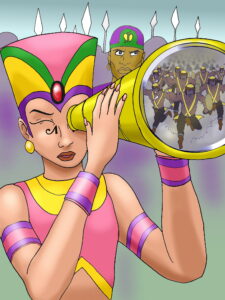 Children’s books are some of the most powerful tools to advance children’s cognitive and developmental skills. Parents and teachers have been relying on children’s books for hundreds of years to facilitate child development. Books have helped most children learn to count, recite their ABCs, identify colors, shapes, objects, and pronounce words. They allow children to safely sample many aspects of the natural and fantasy worlds that are otherwise impractical. Ultimately, children’s books move most children from babblers to beginning readers and beyond.
Children’s books are some of the most powerful tools to advance children’s cognitive and developmental skills. Parents and teachers have been relying on children’s books for hundreds of years to facilitate child development. Books have helped most children learn to count, recite their ABCs, identify colors, shapes, objects, and pronounce words. They allow children to safely sample many aspects of the natural and fantasy worlds that are otherwise impractical. Ultimately, children’s books move most children from babblers to beginning readers and beyond.
Children’s books produce these good works in children using stories or instructions made of only texts and illustrations. The texts and illustrations are all the books have at their disposal to effect positive change in children. These two elements must be highly trusted to be called upon time and time again for help. They also must be highly potent to assist with such heavy lifting as teaching reading and preparing children for more formal education
The text is the stories or instructions in written form. Therefore, it takes the lead in directing the books because it is the reason for the books. It is also the blueprint and structure of the books from cover to cover. The text introduces the books in with the title printed boldly upon the front cover. It does so in the most honest, revealing, and powerful words it can. The text title must relay excitement and promise that the story is well worthy of a read. After some important credits to the author and publisher etc., it must turn to unveiling the story. It must be arranged in such a way to introduce the story, the characters and the setting and themes without a single fumble. Then it must proceed in and orderly fashion with suspense and excitement building. It must do so without hinting of what’s to come and not giving away the ending. When being read, the texts must be appropriate, easy to follow, and easy to understand. It must communicate the content in a way the is engaging and captivating so that the listeners or reader are coaxed to continue to the end of the story.
The illustrations are thought to follow the lead of the story’s texts, but that may not be exactly true. The illustrations appear in nearly all the places that the texts appear. The illustrations may provide a more powerful first impression than the title in text. They often are and may be the reason that draws prospective reader or purchasers in for a closer examination. The cover images and color scheme provide the book with some powerful magnetism. The illustrations on the cover are being analyzed even before the text of the title can be read. Once inside the pages the illustration continues to captivate and amuse with changing poses, added elements, action clips and scencnary. Illustrations are thought to be mandatory in children’s books especial in early childhood. Many authors and illustrators attempt to put a image upon every page of their children’s books.
Both the texts and the illustrations may have individual roles, but they preform best when working together as one. The texts should be big enough to be clearly read and not take up more than 30% of the pages and compliment the illustrations. The texts should not be placed or situated where it blocks the important part of the illustrations and vice versa. Their joint primary objectives are to incrementally advance children from passive recipients to interactive listeners, to voluntary participants, to reading mimickers and then to beginning reader. To perform some semblance of this complex chain of progression, the texts and the illustration should be highly synchronized. The ratio of texts/illustrations to pages should be as close as possible to one to one. This allows children to hear the words and see the images support them by graphically representing what is written. Children will begin to associate words with pictures and picture with sentences and paragraphs. They will start attempting to speak descriptively about the illustrations and begin a type of paraphrasing the accompanying texts. Soon the words of the texts start to be recognized and the paraphrasing gives way to become true pronunciation of words, sentences, and eventually reading. When the texts and illustrations are highly synchronized, they efficiently and effectively advance the development of children. Written by Mister Wilson-Astoryplus Children’s Books…

Leave a Reply